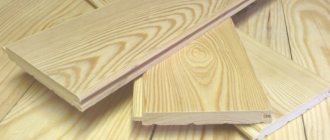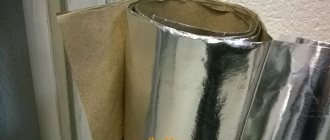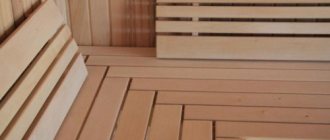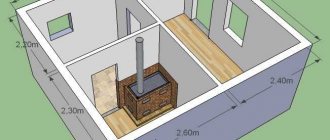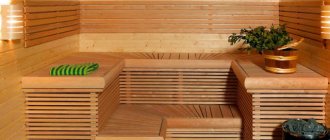Various materials are used for wall cladding. They differ in the complexity of installation, aesthetic properties of the exterior and interior, protective characteristics, cost and other parameters. Wooden lining for finishing the interior surfaces of a home or facade is a durable, environmentally friendly material with excellent heat capacity and insulation from the influence of the external environment, pollution and mechanical damage.
But wood without treatment or additional protective layers becomes less attractive over time, rots and deteriorates. Therefore, it must be properly processed before or after installation.
Why and from what to protect panels?
Wood panels, due to the natural origin of the raw materials, are subject to processes of structural destruction as a result of the influence of pollution, sun and moisture (How to clean dirt on the lining?). Such finishing spoils the appearance of the interior and may even pose a danger to residents:
- Rotting - develops as a result of damage to fibers and prolonged exposure to high humidity and temperature changes. If a person stays in such a room for a long time, then the smell and pathogenic microorganisms that evaporate from the putrefactive inclusions of the lining change his perception of odors, can stain clothes, and are difficult to clean.
- The development of bacteria and mold - is expressed in darkening or discoloration in some areas of the panels. It is necessary to understand that the evaporation of microparticles of fungus or mold can cause an allergic reaction or poison the body.
- Highly flammable - wood burns well, so untreated lining poses a risk of fire, especially in rooms where walls are lined near kitchen stoves, oil heaters, boilers, stoves, etc.
- Curved surface - since wood absorbs moisture very well, untreated panels, due to their hygroscopicity, change their shape over time. This occurs due to the swelling of one side of the fabric while maintaining the other drier. Such lining protrudes from the general plane of the finish, and you can get caught on it and get injured.
Attention
The processing of wooden panels is intended for the safety and durability of the material, and, last of all, for beauty.
Effective methods for protecting wood
The wood is processed to give the lining the following characteristics:
- Immunity to UV radiation, which reduces drying and fading.
- Protection from mechanical loads and surface damage, so that in the future these places do not lose their decorative qualities and do not become a center for the development of pathogenic microflora.
- Protection against rot, mold or mildew to maintain the integrity and attractiveness of the material.
- Fire resistance is achieved as a result of coating with special means that prevent fire and increase the time it takes for fire to spread.
- For a decorative effect, paints and varnishes with or without tint, glossy or matte film, and stains are used to transform the initial appearance of the panels.
You should not purchase a lot of products and turn the finishing into an exhibition of wood protection products. There are also those that combine several functions at once, suitable for the operating conditions of the lining.
Basic rules for choosing wood processing products:
- antiseptics (antifungal and antibacterial agents) must be used;
- in order to properly apply decorative protection, it is necessary to apply a primer to the wood;
- to increase fire resistance, impregnations of different compositions and properties are used;
- it is advisable to coat the wood with biological oils to preserve its natural qualities;
- varnishes with different colors, composition and type of film;
- To remove the previous coating, if it has created a durable film on the surface of the lining, special compounds are needed.
For what purpose should the lining be processed and what means are suitable in this or that case, the specialist says:
Necessary materials
Before you start applying the lining protection product, you need to know its features, advantages and disadvantages. The following materials exist:
- Primers are compositions that prepare the surface for treatment with paints and varnishes; they can be used as an independent coating. The advantages of the compositions are their ability to preserve the grain of the wood and provide reliable protection from moisture. Among the disadvantages are only the preferences of the buyer himself, since the compositions do not create such a glossy or durable film.
- Fire retardants - protect well from high temperatures, reducing the rate of fire as a result of direct contact with the fire. They can be separate products or be part of varnishes. Advantages - simple processing, the ability to add to another paint and varnish product, flame protection. Disadvantages - the need to select according to the type of wood; a separate composition provides only fire resistance.
- Bactericidal preparations are antiseptic stains or components of other materials with an antiseptic effect on wood fibers. Advantages: high protective properties, additional decorative qualities. Disadvantages - pre-treatment is required, harmful compounds are released during application.
- Bleach - the active substance is chlorine, which reacts with wood. Advantages - it gives the panels a noble lightened shade and hides material defects. Disadvantages: destructive effect on the upper layers of panels, low degree of protection.
- Stains - only alcohol-based compounds are used to protect wood, while water-based ones provide only decorative qualities. The advantages of the coating are low price, ease of application, lack of odor, environmental friendliness, protection from moisture and improved decorative qualities.
- Alkyd varnishes - deep penetration into the fiber structure of panels is achieved by making the product from linseed or wood oil and processing it into alkyd resin. The advantages of the coating are good adhesion, moisture resistance, strength, and pronounced fiber texture. The disadvantages are the difficulty of applying and drying the coating, since it is necessary to maintain a certain microclimate in the room for a long time.
- Acrylic scuba tanks - these are compositions based on water-soluble acrylic latex with various inclusions that stabilize the product, providing a durable and silky-to-touch surface as a result of drying.
AdviceIn addition to its protective properties, when coated with alkyd varnish, the material acquires shine and the wood texture is emphasized.
Advantages - simple application, economy, durability of the coating, good adhesion, moisture and fire resistance, preservation of the appearance of the panels. Disadvantages: requirements for the microclimate during application, high price of the product.
- Opaque enamels - contain components similar to oil paints, but with different proportions, providing durable coatings, but thinner. To achieve the desired color, you can apply up to 3 layers of the product. Advantages - the gloss of the coating creates a pleasant appearance, wear resistance, elasticity, hardness and strength are greater than conventional paints. The only disadvantage is the high price of the composition.
- Decorative glazes - preserve the texture of the wood panels and give the material the desired color. Pros: vapor permeability, environmental friendliness, beautiful decorative appearance, thermal and moisture resistance of the coating. The main disadvantage is the high price.
- Acrylate paints are used not so much to protect wood as to give it a beautiful look. Compared to oil paints, the material creates a beautiful appearance of the panels; the coating does not swell or crack; other advantages are resistance to temperature changes and durability. Disadvantages: high price, relatively weak protective characteristics.
- Water-based acrylic compositions combine a tinting mixture and a transparent varnish. Double application is required to provide the required level of protection to the wood, preserve the texture and give the paneling the desired color. The positive aspects are versatility, environmental friendliness of the material, reliable protection and a very attractive appearance. Disadvantages are the high price and laboriousness of preparing the coloring mixture.
- Oil paints – availability, large assortment. Advantages: ease of care of the coating, moisture resistance, beautiful appearance, versatility, low price. Disadvantages - darkening over time, release of unpleasant odors during application, filling of all pores of the structure of the upper layer of the lining with the product and preventing the “breathing” of the panels, fragility.
- Oils – protect wood from the sun, moisture, dirt and dust due to deep impregnation of the top layer of panels. Advantages: ease of application, release only odors characteristic of the plant from which the compositions are made. Disadvantages - limited protection (from dirt and moisture); the products do not protect against fire or mechanical damage.
Important
When working with chemical compounds, brushes are required that are made of natural or artificial bristles of the required hardness to increase the impregnation of the wood.
When is the procedure needed?
Why process the material:
- to create a certain appearance of the coating that will correspond to the interior design;
- the appearance of flaws, defects on the surface, including pathogenic microorganisms, chips, oil ingress;
- the paintwork has lost its shine and attractiveness (what to do if the lining has turned yellow and how to avoid the problem?);
- the slats have lost the desired shade;
- the lower layers of the coloring composition have peeled off.
Depending on the microclimatic conditions of use of the lining, an appropriate coating is required so that the appearance of the material is preserved longer and the functions assigned to the finishing are performed efficiently.
SELECTION OF TOOLS FOR PAINTING WORKS
It is important to choose the right painting tools, since the prepared surface and the applied material may have their own characteristics.
The main list looks like this:
- Paint brushes with different hardness and bristle length;
- Paint rollers of different widths;
- Roller tray;
- Napkins;
- Scotch Brite;
- Construction tape;
- 240 grit sandpaper.
Painting tools
Note: Brushes should be rinsed with soapy water or cleaned with a hard surface before use. Then the bristles from the brush will not leave marks on the coating.
How to process correctly?
In order for the panel to have the necessary protective properties and decorative qualities, processing must be carried out in several stages.
Cleaning from dirt, paint and dust
While small debris, wood chips or dust can be removed with a slightly damp sponge or rag, significant dirt must be removed with wood sandpaper. To remove paintwork, you can use special chemicals or a technical hair dryer with a special spatula.
Advice
If you do not plan to cover the lining with transparent varnishes or other compounds that will not hide the texture of the material, then it is better to remove the old paints and varnishes mechanically. This will not create uneven patches of color like chemical strippers.
Applying primer to panels
This coating will give the lining the following qualities:
- smoothes the surface, filling pores and crevices;
- protects the tree from swelling;
- will improve adhesion for stronger adhesion of the future coating.
The material can be coated with a spray or a regular brush.
Coniferous wood species are capable of releasing the resins contained in the fibers even after treatment for another decade. To prevent this effect, the lining must be coated with a compound that closes the pores on the surface of the panels. Pre-treatment significantly reduces the consumption of paint and varnish material in the future.
Application of protective compounds
Basic means for protecting wood:
- Fire retardants - are used when finishing is used near fire sources, oil radiators, kitchen stoves, in bathhouses, etc. In different types of eurolining, this component is added by the manufacturer.
- Antiseptics - designed to protect against microorganisms, rotting and destruction of panel fibers. It is important to apply antiseptics before installation, since it is necessary to treat the outer surface of the lining, ridges, grooves and the backside.
Attention
It is necessary to process the ends of the panels more carefully, since after installation these places will not be covered with paint and varnish.
Coating
If the coating material has already been selected, then it must be applied according to the recommendations using tools. This will significantly reduce the consumption of varnishes or paints and provide a dense, reliable coating that will last a long time in perfect condition. We talked about how to properly varnish the lining for a long time here, and from this article you will learn why painting is needed and how to properly paint wooden material inside the house.
Prevention
To prevent the lining from turning black and deforming, it is enough to follow a few simple recommendations:
- if the facade of a building is covered with wooden clapboard, then it must be fixed at a short distance from the surface to be improved;
- after covering a wall, floor or ceiling with special boards, the building material must be processed (primed, varnished, painted, etc.);
- in a room lined with clapboard, you need to equip a good ventilation system;
- if it is impossible to install fans, regularly ventilate the room;
- Once every six months, the cladding board must be impregnated with a special protective compound, which minimizes the risk of mold and mildew and protects the building material from precipitation (how to treat lining with protective agents?).
And lastly: the higher quality lining is used for interior or exterior decoration, the less time and effort will be needed in the future to return the cladding board to its original appearance.
Wooden lining is a beautiful, natural material. It is not surprising that so many users around the world prefer it as a finishing and facing material.
The environmental friendliness and natural beauty of wood not only decorates the room, but also creates a certain microclimate in it. And the lining covered with a thick coating (paint, varnish) allows you to create any decor.
But wood has a significant disadvantage that affects the performance characteristics of the lining - it is subject to rotting, various damage, and also tends to darken.
This article is intended for those who want to protect and at the same time preserve the lining in its natural form. Let's consider step by step how and what is the best way to coat (impregnate, treat, paint) wooden lining (euro lining).
I must say that the “take a brush, paint and paint” method is good precisely because of its simplicity. But how long will wood painted this way last? Wouldn't it be better to take a more thorough and correct approach?
Proper painting of wooden lining consists of 4 stages:
Features of the procedure
In the bath
In a steam room or sauna there is often high humidity and temperature changes. Therefore, such an unstable and aggressive microclimate for wood requires enhanced protection of the lining (how to line the walls of a bathhouse with lining?). Fire retardants are applied to reduce the risk of fire, which is important when installing an open stove or hot stones. Antiseptic compositions will protect against the development of microorganisms that appear in a humid environment and settle in places of flaws or accumulation of water.
There are ready-made wax-based products for treating panels when finishing a bath. Such compositions will make the lining suitable for use during cyclic moistening of increased intensity, under conditions of large temperature changes.
Application of varnish for slats as a protective layer in a sauna or bathhouse must be done no more than once; the lining can be coated in several layers in the dressing room.
What and how to properly treat wooden lining in a bathhouse or sauna is explained by a specialist in the following video:
Inside the house
Wooden slabs should only be treated with compounds that are highly environmentally friendly. The canvases must be protected from microorganisms, and in the kitchen or near wiring they are covered with fire retardants (how to cover the walls of rooms and houses with clapboard?).
Important
You need to choose paint and varnish compositions according to the conditions of their use, i.e. for interior decoration.
Prevention
To prevent the lining from turning black and deforming, it is enough to follow a few simple recommendations:
- if the facade of a building is covered with wooden clapboard, then it must be fixed at a short distance from the surface to be improved;
- after covering a wall, floor or ceiling with special boards, the building material must be processed (primed, varnished, painted, etc.);
- in a room lined with clapboard, you need to equip a good ventilation system;
- if it is impossible to install fans, regularly ventilate the room;
- Once every six months, the cladding board must be impregnated with a special protective compound, which minimizes the risk of mold and mildew and protects the building material from precipitation (how to treat lining with protective agents?).
And lastly: the higher quality lining is used for interior or exterior decoration, the less time and effort will be needed in the future to return the cladding board to its original appearance.
Lining is a finishing material that is a thin cladding board. It can be used for external and internal decoration of residential premises. After all, thanks to its ecological origin, the lining is safe for everyone living in the house.
But, like any other building material, such a board has its drawbacks; it can be difficult to clean it from dirt. How to clean the lining and not spoil the structure of the board? Let's take a closer look.

